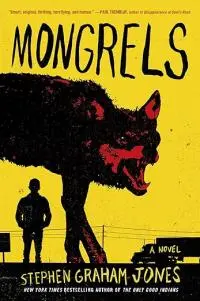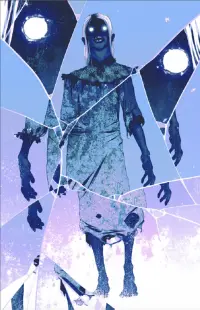(For reference, check out tvtropes.org as it has a TON of great information.)
So, I’ve said many times (and have written columns about it) that we need to be original, avoid tropes, push past the cliches, and into something fresh, right? Well, that’s all true and accurate, but what I didn’t say is that there is no AVOIDING the tropes, cliches, and past histories of genre, plot, character, and setting. It’s all been done—done better, done worse—but done. In spades. In so many different ways. So, instead of avoiding tropes (which can’t actually be done) how can we instead use tropes as a jumping off point? Let’s figure that out.
Defined
From Wikipedia, the bolded parts, my emphasis, for this conversation: “A literary trope is the use of figurative language, via word, phrase, or an image, for artistic effect…The word trope has also undergone a semantic change and now also describes commonly recurring or overused literary and rhetorical devices, motifs, or clichés in creative works.”
Tropes As A Jumping Off Point
 So, any time you sit down to write, you are going to run into tropes—a hooker with a heart of gold; an abusive husband who drinks and has affairs; going back in time to save the day (maybe by killing Hitler); a monster that is not really a monster, etc. We could go on all day—the aforementioned TV Tropes has over 20,000 tropes, and it continues to grow. So what’s important here is that you recognize what tropes you’re going to use, and then do more. Start with the standard rules and expectations.
So, any time you sit down to write, you are going to run into tropes—a hooker with a heart of gold; an abusive husband who drinks and has affairs; going back in time to save the day (maybe by killing Hitler); a monster that is not really a monster, etc. We could go on all day—the aforementioned TV Tropes has over 20,000 tropes, and it continues to grow. So what’s important here is that you recognize what tropes you’re going to use, and then do more. Start with the standard rules and expectations.
- Vampires—they drink blood, can’t be out in the sunlight, sleep in a coffin, stake through heart will kill them, and they are otherwise immortal.
- Werewolf—full moon triggers their transformation, if bitten you turn into one, violent beasts, can be killed with silver bullet.
- Zombies—eat brains, one bite and you turn into one, slow moving.
- Aliens—green or grey with bulbous heads, big eyes, long fingers, and probes.
- Devils/demons—red skin, horns, hooves, pitchfork, tail, fire.
- Ghosts—white or translucent, haunt spaces and people, sad or angry, seeking revenge.
So, these are all fairly expected, standard tropes for a handful of monsters. You can do this kind of research for horror, as well as fantasy and science fiction, for thrillers and mysteries, you name it. Whenever you sit down to write your story or book, there are going to be expectations, rules to the genre and tale, to the creature and lands you create. You may have to follows some of them, or at some point it stops being that genre, or theme, or trope. So this is important—what makes it a horror story, a fantasy story, what makes it science fiction? And then as we dig down deeper into that sub-genre, what defines Lovecraftian horror, urban fantasy, and steampunk? And then what’s going on with your particular story? And what can you do next? How can you innovate? What fresh life can you breathe into this tale?
Some Examples
I was blown away by Catriona Ward’s vampire story, “A Hotel in Germany.” The minute I knew it was going to be some variation on a vampire story, I rolled my eyes and sighed. But hot damn if she didn’t do some really interesting things. The vampire was a sort of slave using drugs and technology to keep her in check. The ways that she transformed, when “off her meds” to help her owner, the power and strength of her abilities when she did, the Hollywood vibe and setting, the family history of her role to this old woman, who at one time was a child, that she took care of—fascinating stuff.
 Since we’re talking beasts here, how about Mongrels, by Stephen Graham Jones. He usually finds creative ways to work the Native American Indian experience into his work, and that is all over this novel. From being outsiders and loners, to drinking and violence, to the family history that is passed down, and the peaceful nature at the heart of their lives together. It’s a fascinating portrayal, breaking many of the usual rules, creating nostalgia, empathy, hope, and fear alongside the moments of transformation—which is (new rules here) at will. Powerful stuff.
Since we’re talking beasts here, how about Mongrels, by Stephen Graham Jones. He usually finds creative ways to work the Native American Indian experience into his work, and that is all over this novel. From being outsiders and loners, to drinking and violence, to the family history that is passed down, and the peaceful nature at the heart of their lives together. It’s a fascinating portrayal, breaking many of the usual rules, creating nostalgia, empathy, hope, and fear alongside the moments of transformation—which is (new rules here) at will. Powerful stuff.
I co-wrote a story entitled “Golden Sun,” and my fellow authors and I purposefully looked at horror story tropes and tried to choose the opposite (or the lesser variation) on every aspect of the story. Day or night? Day. Winter, spring, summer, or fall? Summer. Haunted house, graveyard, asylum, or forest? How about a beach. And our main characters? A father, mother, daughter, and son—no heroes, monsters, superpowers, or supernatural abilities. And that story ended up getting selected for The Best Horror of the Year.
I think of “The Loneliness of the Long-Distance Reporter” by Daniela Tomova over at Tor. Her zombies are called “revenants,” meaning “one that comes back.” Add to that an arctic sled race, the strange ways that these creatures all disappear into a singular point, a void buried deep in the ice, and the speed with which they move—and this is a tense, dangerous, terrifying story. The final scenes with her various lives and paths spilling out, overlapping, and then quickly disappearing one by one, her fates reduced to one way out—so intense. Really well done, and quite original.
In Conclusion
So what I’m saying here is don’t even try to avoid the cliches. Figure out what kind of story you’re going to write, do the research, study the plot points, look at the various monsters and permutations, and then ask yourself what YOU can bring to the table, what YOU can do differently. Lean INTO the trope, the cliché, the expectation, and then use that to your advantage. Force the gaze of your reader, the knowledge they have, and the history of whatever genre, plot, trope, and story you’re telling and then pull the rug out from under them, subvert it, flip it, and do something new, fresh, original, and unexpected.

About the author
Richard Thomas is the award-winning author of seven books: three novels—Disintegration and Breaker (Penguin Random House Alibi), as well as Transubstantiate (Otherworld Publications); three short story collections—Staring into the Abyss (Kraken Press), Herniated Roots (Snubnose Press), and Tribulations (Cemetery Dance); and one novella in The Soul Standard (Dzanc Books). With over 140 stories published, his credits include The Best Horror of the Year (Volume Eleven), Cemetery Dance (twice), Behold!: Oddities, Curiosities and Undefinable Wonders (Bram Stoker winner), PANK, storySouth, Gargoyle, Weird Fiction Review, Midwestern Gothic, Gutted: Beautiful Horror Stories, Qualia Nous, Chiral Mad (numbers 2-4), and Shivers VI (with Stephen King and Peter Straub). He has won contests at ChiZine and One Buck Horror, has received five Pushcart Prize nominations, and has been long-listed for Best Horror of the Year six times. He was also the editor of four anthologies: The New Black and Exigencies (Dark House Press), The Lineup: 20 Provocative Women Writers (Black Lawrence Press) and Burnt Tongues (Medallion Press) with Chuck Palahniuk. He has been nominated for the Bram Stoker, Shirley Jackson, and Thriller awards. In his spare time he is a columnist at Lit Reactor and Editor-in-Chief at Gamut Magazine. His agent is Paula Munier at Talcott Notch. For more information visit www.whatdoesnotkillme.com.







